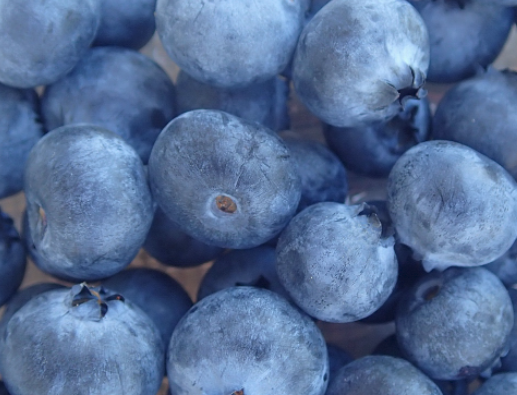| "Descrizione" by Nat45 (5724 pt) | 2023-Oct-05 20:06 |
Review Consensus: 10 Rating: 10 Number of users: 1
| Evaluation | N. Experts | Evaluation | N. Experts |
|---|---|---|---|
| 1 | 6 | ||
| 2 | 7 | ||
| 3 | 8 | ||
| 4 | 9 | ||
| 5 | 10 |
Blueberry (Vaccinium myrtillus L.) belongs to the Ericaceae family and has a dark blue to black colouring.

It is found in forests up to 1,000 meters.
In Europe it blooms in May and the first fruits appear in July.
Other varieties:
- Vaccinium vitis idaea (red)
- Vaccinium corymbosum (giant american)
Blueberry contains a large number of phytochemicals including flavonoids, polyphenols and anthocyanins to which the scientific literature attributes a positive role in limiting the risks of cardiovascular disease, obesity and type 2 diabetes mellitus as they exert antioxidant and anti-inflammatory activity. It can therefore be considered a nutraceutical.
This crossover study conducted on obese or overweight patients with metabolic syndrome confirmed an antioxidant action that manifested itself after three hours from the intake of blueberries during meals (1).
The most abundant flavonoids found in blueberry are, according to this study, quercetin, kaempferol and, among phenolic acids, gentisic acid. These compounds were evaluated on treated cells HCT-116, a tumor model for human colon cancer. Quercetin and kaempferol have shown strong cytotoxic, antioxidant and apoptotic effects, while gentisic acid is mostly effective as an antioxidant polyphenol. The study concludes that these flavonoids have anticancer potential (2).
Based on evidence, blueberry can improve some measures of cognitive performance and mood (3).
In blueberry content, 10.0 μg/mL of phenolic acid present in blueberry has been shown to inhibit the death of retinal pigment epithelial cells. Anthocyanins and flavonoids showed similar results and the consistent activity of flavonoids improved phagocytosis and oxidative cellular stress (4).
An intake of blueberry flavonoids, equivalent to 240 g or 1½ cup of fresh blueberries, can provide acute cognitive benefits in children. These results support the accumulation of evidence that flavonoid-rich products are beneficial to healthy brain function, particularly during critical developmental periods (5).
References__________________________________________________________________
(1) Blueberry-Based Meals for Obese Patients with Metabolic Syndrome: A Multidisciplinary Metabolomic Pilot Study. Sobolev AP, Ciampa A, Ingallina C, Mannina L, Capitani D, Ernesti I, Maggi E, Businaro R, Del Ben M, Engel P, Giusti AM, Donini LM, Pinto A. Metabolites. 2019 Jul 10;9(7). pii: E138. doi: 10.3390/metabo9070138.
(2) Assessing Anticancer Potential of Blueberry Flavonoids, Quercetin, Kaempferol, and Gentisic Acid, Through Oxidative Stress and Apoptosis Parameters on HCT-116 Cells. Demirel Sezer E, Oktay LM, Karadadaş E, Memmedov H, Selvi Gunel N, Sözmen E. J Med Food. 2019 Jun 26. doi: 10.1089/jmf.2019.0098.
(3) The effect of blueberry interventions on cognitive performance and mood: A systematic review of randomized controlled trials. Travica N, D'Cunha NM, Naumovski N, Kent K, Mellor DD, Firth J, Georgousopoulou EN, Dean OM, Loughman A, Jacka F, Marx W. Brain Behav Immun. 2019 Apr 15. pii: S0889-1591(18)31195-4. doi: 10.1016/j.bbi.2019.04.001.
(4) Blueberry Polyphenols Ameliorate Visible Light and Lipid-Induced Injury of Retinal Pigment Epithelial Cells. Liu Y, Liu M, Chen Q, Liu GM, Cao MJ, Sun L, Lu Z, Guo C. J Agric Food Chem. 2018 Dec 5;66(48):12730-12740. doi: 10.1021/acs.jafc.8b05272.
(5) The effects of acute wild blueberry supplementation on the cognition of 7-10-year-old schoolchildren. Barfoot KL, May G, Lamport DJ, Ricketts J, Riddell PM, Williams CM. Eur J Nutr. 2018 Oct 16. doi: 10.1007/s00394-018-1843-6.
| Evaluate |

